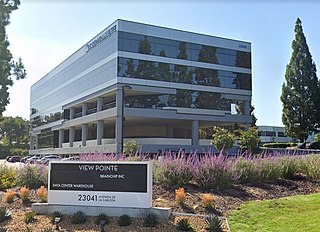Artificial intelligence (AI), in its broadest sense, is intelligence exhibited by machines, particularly computer systems. It is a field of research in computer science that develops and studies methods and software that enable machines to perceive their environment and uses learning and intelligence to take actions that maximize their chances of achieving defined goals. Such machines may be called AIs.
Vladimir Naumovich Vapnik is a computer scientist, researcher, and academic. He is one of the main developers of the Vapnik–Chervonenkis theory of statistical learning and the co-inventor of the support-vector machine method and support-vector clustering algorithms.
Machine learning (ML) is a field of study in artificial intelligence concerned with the development and study of statistical algorithms that can learn from data and generalize to unseen data, and thus perform tasks without explicit instructions. Recently, artificial neural networks have been able to surpass many previous approaches in performance.

In artificial intelligence, symbolic artificial intelligence is the term for the collection of all methods in artificial intelligence research that are based on high-level symbolic (human-readable) representations of problems, logic and search. Symbolic AI used tools such as logic programming, production rules, semantic nets and frames, and it developed applications such as knowledge-based systems, symbolic mathematics, automated theorem provers, ontologies, the semantic web, and automated planning and scheduling systems. The Symbolic AI paradigm led to seminal ideas in search, symbolic programming languages, agents, multi-agent systems, the semantic web, and the strengths and limitations of formal knowledge and reasoning systems.
Léon Bottou is a researcher best known for his work in machine learning and data compression. His work presents stochastic gradient descent as a fundamental learning algorithm. He is also one of the main creators of the DjVu image compression technology, and the maintainer of DjVuLibre, the open source implementation of DjVu. He is the original developer of the Lush programming language.

Yann André LeCun is a French-American computer scientist working primarily in the fields of machine learning, computer vision, mobile robotics and computational neuroscience. He is the Silver Professor of the Courant Institute of Mathematical Sciences at New York University and Vice-President, Chief AI Scientist at Meta.
A cognitive computer is a computer that hardwires artificial intelligence and machine learning algorithms into an integrated circuit that closely reproduces the behavior of the human brain. It generally adopts a neuromorphic engineering approach. Synonyms include neuromorphic chip and cognitive chip.
An AI accelerator, deep learning processor, or neural processing unit (NPU) is a class of specialized hardware accelerator or computer system designed to accelerate artificial intelligence and machine learning applications, including artificial neural networks and machine vision. Typical applications include algorithms for robotics, Internet of Things, and other data-intensive or sensor-driven tasks. They are often manycore designs and generally focus on low-precision arithmetic, novel dataflow architectures or in-memory computing capability. As of 2024, a typical AI integrated circuit chip contains tens of billions of MOSFETs.
Explainable AI (XAI), often overlapping with Interpretable AI, or Explainable Machine Learning (XML), either refers to an artificial intelligence (AI) system over which it is possible for humans to retain intellectual oversight, or refers to the methods to achieve this. The main focus is usually on the reasoning behind the decisions or predictions made by the AI which are made more understandable and transparent. XAI counters the "black box" tendency of machine learning, where even the AI's designers cannot explain why it arrived at a specific decision.

Graphcore Limited is a British semiconductor company that develops accelerators for AI and machine learning. It has introduced a massively parallel Intelligence Processing Unit (IPU) that holds the complete machine learning model inside the processor.
The Open Neural Network Exchange (ONNX) [] is an open-source artificial intelligence ecosystem of technology companies and research organizations that establish open standards for representing machine learning algorithms and software tools to promote innovation and collaboration in the AI sector. ONNX is available on GitHub.

Mila - Quebec AI Institute is a research institute in Montreal, Quebec, focusing mainly on machine learning research. Approximately 1000 students and researchers and 100 faculty members, were part of Mila in 2022. Along with Alberta's Amii and Toronto's Vector Institute, Mila is part of the Pan-Canadian Artificial Intelligence Strategy.
Karen Hao is an American journalist and data scientist. Currently a contributing writer for The Atlantic and previously a foreign correspondent based in Hong Kong for The Wall Street Journal and senior artificial intelligence editor at the MIT Technology Review, she is best known for her coverage on AI research, technology ethics and the social impact of AI. Hao also co-produces the podcast In Machines We Trust and writes the newsletter The Algorithm.
Specialized computer hardware is often used to execute artificial intelligence (AI) programs faster, and with less energy, such as Lisp machines, neuromorphic engineering, event cameras, and physical neural networks. As of 2023, the market for AI hardware is dominated by GPUs.

BrainChip is an Australia-based technology company, founded in 2004 by Peter Van Der Made, that specializes in developing advanced artificial intelligence (AI) and machine learning (ML) hardware. The company's primary products are the MetaTF development environment, which allows the training and deployment of spiking neural networks (SNN), and the AKD1000 neuromorphic processor, a hardware implementation of their spiking neural network system. BrainChip's technology is based on a neuromorphic computing architecture, which attempts to mimic the way the human brain works. The company is a part of Intel Foundry Services and Arm AI partnership.

Generative artificial intelligence is artificial intelligence capable of generating text, images, videos, or other data using generative models, often in response to prompts. Generative AI models learn the patterns and structure of their input training data and then generate new data that has similar characteristics.
Llama is a family of autoregressive large language models released by Meta AI starting in February 2023. The latest version is Llama 3 released in April 2024.
Open-source artificial intelligence is the application of open-source practices to the development of artificial intelligence resources.

Michael Karl Gschwind is an American computer scientist who currently is a director and principal engineer at Meta Platforms in Menlo Park, California. He is recognized for his seminal contributions to the design and exploitation of general-purpose programmable accelerators, as an early advocate of sustainability in computer design and as a prolific inventor.








